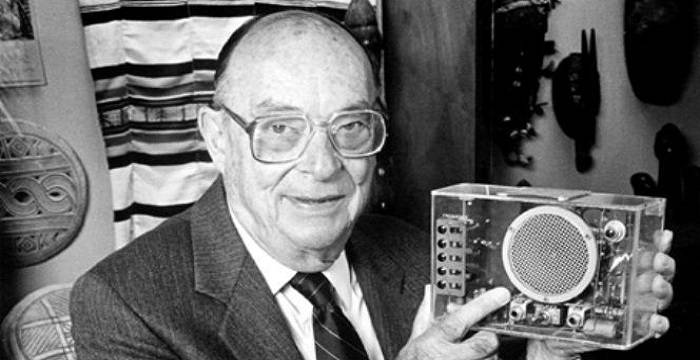John Bardeen was an American physicist. He is the only person to be awarded the Nobel Prize in Physics twice: first in 1956 with William Shockley and Walter Brattain for the invention of the transistor; and again in 1972 with Leon N Cooper and John Robert Schrieffer for a fundamental theory of conventional superconductivity known as the BCS theory.
Bardeen was born in Madison, Wisconsin, on May 23, 1908, he was the son of Charles Bardeen, the first dean of the University of Wisconsin Medical School.
Bardeen studied at University High School at Madison and graduated from high school in 1923. He then pursued a bachelor in electrical engineering from the University of Wisconsin–Madison and completed it in 1928. He received his Master of Science degree in electrical engineering in 1929 from Wisconsin.
Bardeen then worked as a geophysicist at Gulf Research which is the research wing of Gulf Oil based in Pittsburgh. He worked there from 1930 to 1933. He soon lost interest in the job.
'The combined results of several people working together is often much more effective than could be that of an individual scientist working alone.' - John Bardeen Click To TweetBardeen applied for a Ph.D. at Princeton University after losing interest in his job at Gulf Research. He studied Mathematics and Physics there. Bardeen was working under physicist and future Nobel Laureate Eugene Wigner and he ended up writing his thesis on a problem in solid-state physics.
Though he got his Ph.D. in 1936. Before it only, he was offered a position as Junior Fellow of the Society of Fellows at Harvard University in 1935 where he worked with two of the future Nobel Laureates in physics, John Hasbrouck van Vleck and Percy Williams Bridgman from 1935-1938. He worked on cohesion and electrical conduction in metals and also did some work on the level density of nuclei.
Bardeen married Jane Maxwell on July 18, 1938. While at Princeton, he met Jane during a visit to his old friends in Pittsburgh.
Bardeen was at Naval Ordnance Laboratory from 1941 to 1945 during World War 2. He headed the team working on magnetic mines and torpedoes.
After World War 2, Bardeen started working at Bell Labs in 1945 where he worked with William Shockley and Walter Brattain to invent the transistor. But then Shockley who was the team leader at Bell Labs took a major share in inventing transistor whereas, in reality, he didn’t have a major contribution. Then the relation between Shockley and Bardeen deteriorated and Bardeen was not allowed to work on other projects. Eventually, Bardeen left Bell Labs.
He then joined the University of Illinois at Urbana–Champaign in 1951. Bardeen was Professor of Electrical Engineering and of Physics at Illinois. His Ph.D. student Nick Holonyak invented the LED in 1962.
In 1957, he in collaboration with Leon Cooper and his doctoral student John Robert Schrieffer proposed the standard theory of superconductivity known as the BCS theory (named for their initials)
Bardeen was there at the University of Illinois until 1975 when he retired. Even after that, he remained active in academic research. Bardeen continued his research throughout the 1980s and published articles in Physical Review Letters and Physics Today less than a year before he died on January 30, 1991. That is what we call the true passion for Science.
Though Bardeen was a genius, he differed radically from the popular stereotype of ‘genius‘ and was uninterested in appearing other than ordinary and that is why probably the public and the media often overlooked him. This is probably the main reason why most of us don’t know him even after being the only one to win two physics Nobel Prizes. This selfless nature adds to his greatness.
A salute to this legend for his passion and his contribution towards science and humanity.

